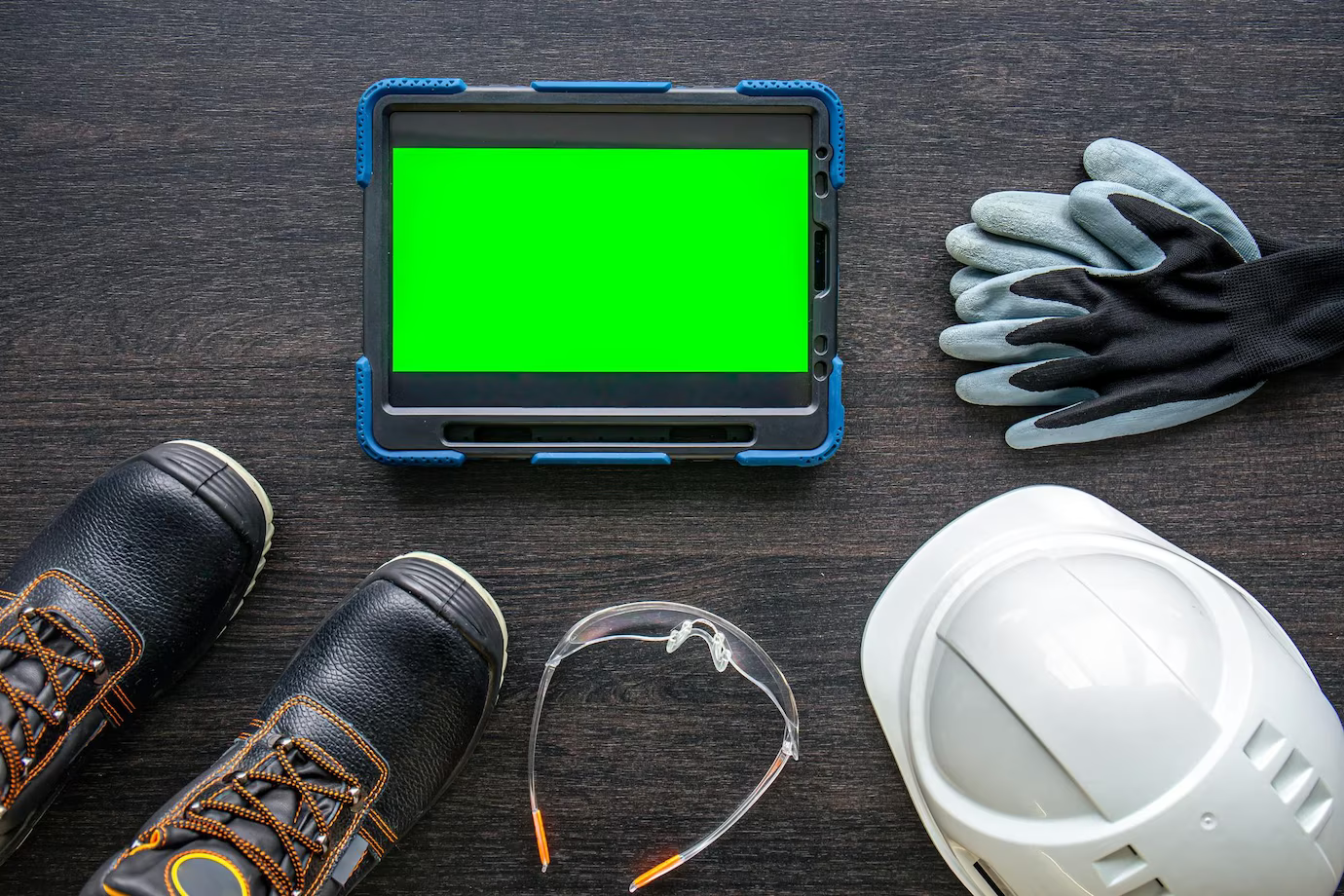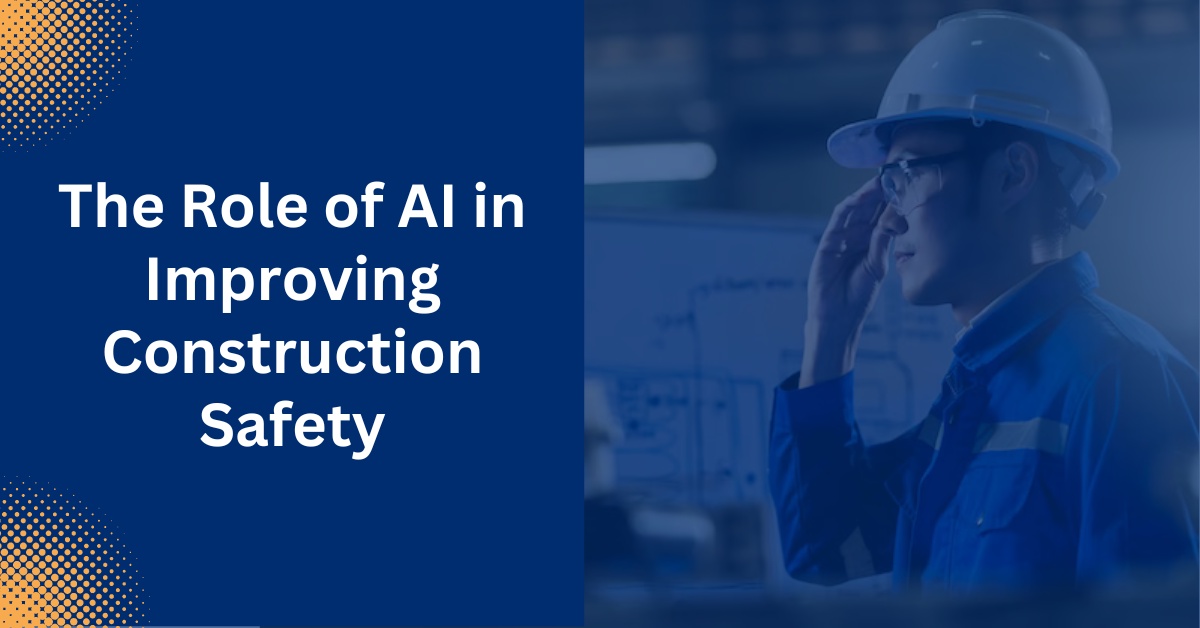Introduction:
Explanation of AI Artificial Intelligence, or AI, is a rapidly growing field of technology that involves the development of computer programs and systems that can perform tasks that typically require human intelligence, such as perception, reasoning, and learning. AI has the potential to revolutionize many industries, including construction, by improving efficiency, reducing costs, and enhancing safety.
Importance of safety in the construction industry Safety is a critical concern in the construction industry, as workers are often exposed to various hazards, such as falls, electrocution, and heavy machinery accidents. In fact, according to the Occupational Safety and Health Administration (OSHA), one in five worker fatalities occur in construction. Thus, implementing effective safety measures is essential for preventing injuries and fatalities, as well as reducing the financial and legal risks associated with accidents on the job site.
A brief overview of how AI can improve safety One way that AI can improve safety in the construction industry is by analyzing data from sensors and cameras to identify potential hazards in real-time. For example, AI-powered cameras can detect if a worker is not wearing appropriate protective gear or if they are in a hazardous area. Additionally, AI can be used to predict and prevent accidents before they occur by analyzing data on past incidents and identifying patterns and trends. By using AI in construction safety, companies can proactively address safety issues, reduce the risk of accidents, and create a safer work environment for employees.
AI-Based Safety Equipment and Tools

Overview of AI-based safety equipment and tools AI-based safety equipment and tools refer to devices and technologies that incorporate artificial intelligence to improve safety in construction. These technologies have the ability to analyze data, identify potential hazards, and provide real-time feedback to workers and supervisors, which can help prevent accidents and injuries.
Examples of AI-based safety equipment and tools (e.g., drones, wearable devices, smart helmets) Examples of AI-based safety equipment and tools in construction include drones, wearable devices, and smart helmets. Drones equipped with AI technology can be used to inspect job sites for potential hazards and monitor workers in real time. Wearable devices such as smart vests or wristbands can monitor vital signs and detect early signs of fatigue or dehydration, which can prevent accidents caused by human error. Smart helmets equipped with AI sensors can monitor workers' movements and detect when they are in a dangerous position or at risk of injury.
Benefits of using AI-based safety equipment and tools in construction There are several benefits of using AI-based safety equipment and tools in construction. First and foremost, they can help reduce the risk of accidents and injuries on the job site, which can improve worker safety and productivity. Additionally, these technologies can help companies save money on insurance claims and legal fees associated with workplace accidents. By using AI-based safety equipment and tools, construction companies can also enhance their reputation as safety-conscious employers and attract top talent. Overall, the use of AI in construction safety equipment and tools is a valuable investment that can provide significant benefits to both workers and companies.
AI-Based Risk Management
Explanation of AI-based risk management AI-based risk management involves using artificial intelligence to analyze data and identify potential risks in construction projects. This technology can help construction companies to assess and manage risks, mitigate hazards, and prevent accidents. By using AI-based risk management, companies can proactively address safety issues and create a safer work environment for their employees.
How AI can help in identifying and analyzing potential hazards in construction AI can help in identifying and analyzing potential hazards in construction by analyzing data from sensors, cameras, and other sources. For example, AI can analyze data from sensors on heavy machinery to detect abnormalities that may indicate a potential failure. Similarly, AI can analyze data from cameras to identify areas of the job site where safety protocols are not being followed, such as workers not wearing protective gear. By analyzing this data, AI-based risk management systems can help companies to identify potential hazards and take corrective action before accidents occur.
Benefits of using AI-based risk management in construction safety The benefits of using AI-based risk management in construction safety are numerous. First, AI can help companies to identify potential hazards before they cause accidents or injuries, which can improve worker safety and productivity. Additionally, using AI-based risk management can help construction companies save money on insurance claims and legal fees associated with workplace accidents. Moreover, AI-based risk management can help companies to comply with safety regulations and improve their reputation as safety-conscious employers. Overall, the use of AI-based risk management in construction safety is a valuable investment that can provide significant benefits to both workers and companies.
AI-Based Training and Education
Overview of AI-based training and education AI-based training and education refers to the use of artificial intelligence in training and educating workers on construction safety. This technology can provide workers with personalized training and real-time feedback, which can help them to develop skills and knowledge to prevent accidents and injuries on the job site.
Examples of AI-based training and education (e.g., virtual reality simulations, e-learning platforms) Examples of AI-based training and education in construction safety include virtual reality simulations and e-learning platforms. Virtual reality simulations can provide workers with a safe and realistic environment to practice safety procedures and protocols. E-learning platforms can provide workers with on-demand access to safety training and resources, as well as personalized learning paths based on their individual needs and knowledge level. AI-based training and education can help construction workers develop critical safety skills and knowledge, which can help prevent accidents and injuries.
Benefits of using AI-based training and education in construction safety The benefits of using AI-based training and education in construction safety are significant. First, AI-based training and education can provide workers with personalized training and feedback, which can help them to develop critical safety skills and knowledge. Additionally, AI-based training and education can improve worker engagement and retention of safety information. By using AI-based training and education, construction companies can also reduce the risk of accidents and injuries on the job site, which can improve worker safety and productivity. Finally, AI-based training and education can help companies to comply with safety regulations and reduce the risk of costly legal fees associated with workplace accidents. Overall, the use of AI-based training and education in construction safety is a valuable investment that can provide significant benefits to both workers and companies.
Case Studies: Examples of AI in Action
Real-life examples of AI being used to improve safety in construction There are many real-life examples of AI being used to improve safety in construction. For example, AI is being used to power safety inspections, safety vests, and safety training. These technologies are helping construction companies to identify and mitigate risks, prevent accidents and injuries, and create a safer work environment for their employees.
case study 1: AI-powered safety vests One example of AI being used to improve safety in construction is AI-powered safety vests. These vests use sensors and machine learning algorithms to monitor workers' vital signs and detect potential health issues. For example, if a worker's heart rate or body temperature reaches an unsafe level, the vest can alert the worker and their supervisor to take action. By using AI-powered safety vests, construction companies can help prevent worker injuries and health issues, as well as improve productivity.
Case study 2: AI-powered safety inspections Another example of AI being used to improve safety in construction is AI-powered safety inspections. These inspections use machine learning algorithms to analyze data from sensors and cameras to identify potential safety hazards on the job site. For example, AI-powered safety inspections can detect potential fall hazards or equipment malfunctions, and alert workers and supervisors to take corrective action. By using AI-powered safety inspections, construction companies can proactively identify and address potential safety issues, which can help prevent accidents and injuries.
Case study 3: AI-powered safety training A third example of AI being used to improve safety in construction is AI-powered safety training. AI-powered safety training uses machine learning algorithms to personalize training content based on workers' knowledge level and learning style. For example, AI-powered safety training can provide workers with virtual reality simulations and real-time feedback to practice safety procedures and protocols. By using AI-powered safety training, construction companies can improve worker engagement and retention of safety information, as well as prevent accidents and injuries on the job site.
Challenges and Limitations of AI in Construction Safety
Explanation of challenges and limitations While AI-based safety measures have the potential to significantly improve safety in construction, there are also several challenges and limitations associated with their implementation. These challenges and limitations can include issues related to data quality, cost, and worker acceptance and trust.
Challenges in the implementation of AI-based safety measures One challenge in the implementation of AI-based safety measures is ensuring the quality and accuracy of the data used by these technologies.
AI algorithms rely on high-quality data to provide accurate insights and predictions, and construction companies must ensure that their data sources are reliable and up-to-date. Additionally, the cost of implementing AI-based safety measures can be a challenge for some construction companies, especially smaller businesses with limited budgets. Finally, the acceptance and trust of workers can also be a challenge, as some workers may be resistant to new technologies or concerned about the potential impact of AI on their jobs.
Limitations of AI in construction safety There are also some limitations to the use of AI in construction safety. One limitation is that AI algorithms are only as good as the data they are trained on, and if the data is incomplete or biased, the AI algorithms may produce inaccurate or biased results. Additionally, AI algorithms may not be able to account for all the complexities of the construction environment, such as changing weather conditions, dynamic job sites, and unexpected events. Finally, AI algorithms may not be able to fully replace human expertise and judgment in some situations, and construction companies must ensure that workers are trained to use AI-based safety measures appropriately and effectively.
Conclusion:
In conclusion, AI-based safety measures have the potential to significantly improve safety in the construction industry. From AI-powered safety equipment and tools to AI-based risk management and training, these technologies can help construction companies identify and mitigate potential hazards, prevent accidents and injuries, and create a safer work environment for their employees. However, there are also several challenges and limitations associated with the implementation of AI-based safety measures, including issues related to data quality, cost, and worker acceptance and trust. Construction companies must carefully consider these challenges and limitations when implementing AI-based safety measures, and ensure that workers are properly trained to use these technologies effectively. Overall, the use of AI in construction safety represents an exciting opportunity to improve safety and reduce the risk of accidents and injuries on the job site.


No comments yet